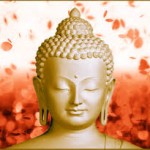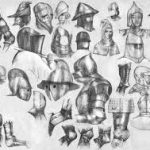Ayurveda is the oldest system of Medicine. With the inception of human life on earth, Ayurveda started being applied. The Vedas, especially the ‘Atharva-Veda’, deals with extensive Ayurvedic information. Ayurveda is a fact – as simple a fact as ‘Sun rises in the east and sets in the west’ OR ‘Earth revolves round the Sun’ OR ‘Earth is round’. The way you explore, understand and adapt to its reality is the key to healthy life.
History of Ayurveda
Tracing the history of Ayurveda back to its earliest route is a complicated and an uphill task. There are detailed instances and complex modes of transmission cited about its origin and expansion. After going through a series of sources of information, here is an understandable outline of the history.
We will navigate through
-
Vedic period
-
Upanishad period
-
Buddhist period
-
Post-Buddhist period
-
Medieval period
-
Modern period
 Vedic period: (5000 BC onwards or even earlier)
Vedic period: (5000 BC onwards or even earlier)
It is the very root of Indian Culture. All the four Vedas – Rig Veda, Sama Veda, Yajur Veda and Atharva Veda – contain many references of medicine and description of diseases. Different bacteria are described as responsible for various diseases. Atharva Veda is referred to as an offshoot of Ayurveda.
If the history of Ayurveda is traced from our available ancient texts, it is mentioned that Ayurveda was conceptualized with the inception of the universe. From Brahma (creator of the Universe), the knowledge was passed to Daksha Prajapati (earliest creative sage), who further passed it to Ashwins (the divine physicians). From Ashwins it was passed to Indra(celestial being who represents the zones at which the energy is transmitted through to the senses). As imbalance in the mode of living began to take its seat, the sages elected a delegate which meditated at the foothills of Himalayas to call upon Indra, to relieve the worldly beings from the menace of diseases. Indra transmitted the knowledge of Ayurveda to the disciples – Atri, Bhardwaj, Kashyap and Dhanwantri.
- The School of Ayurveda initiated by Atri and Bhardwaj specialized in Internal Medicine.
- The School of Ayurveda initiated by Kashyap specialized in Paediatrics.
- The School of Ayurveda initiated by Dhanwantri specialized in Surgery.
 Upanishad period: (1000 BC onwards)
Upanishad period: (1000 BC onwards)
This period further systematized knowledge. The medical knowledge acquired in early age was documented systematically and organized scientifically in compendia (Samhitas) of Ayurveda. There were many Atreyas (disciples of Atri were called Atreya) who were teachers and authors on medicine. One of them was Professor of Medicine at the University of Taxila. He had seven famous disciples namely, Agnivesha, Bhela, Jatikarna, Parashar,Harita, Ksharpani and Jivaka. All of them wrote treatise on Ayurveda, most of which are lost. The work of Agnivesha, or part of it, has come down to us in the form of Charaka Samhita.
Ancient Ayurveda texts of Charaka Samhita and Sushruta Samhita were written in this period (700 – 600 BC). These Samhitas are extraordinarily sophisticated and perfectly written. Charaka Samhita includes carefully formulated classification of diseases and their treatments, as well as sections on embryology, nutrition and medicinal herbs. Ancient Indian surgeries were amazingly advanced. Sushruta Samhita (Sushruta was a follower of the School of Dhanwantri) elaborately describes various surgeries including plastic surgery and caesarian section.
 Buddhist period: (600 BC onwards)
Buddhist period: (600 BC onwards)
The Universities of Taxila and Nalanda were centres of medical science. By this time cataloguing of medicinal plants had increased enormously. There are elaborate stories about Jivaka, Lord Buddha’s chief physician and the disciple of Atreya. Surgery was also at its glory in this period. There are numerous instances cited about complex surgeries like limb transplants and grafting at the war zones.
Post-Buddhist period:
 There was no conflict or clash between the health sciences of various ancient civilizations. Early physicians were ready and willing to learn from one another, and the extensive trade routes of ancient world made it simpler for them to do so. The medical science of Greece is identified with Hippocrates, who was born in 450 B.C. He also had the same theories as Ayurveda physicians, and considered health to be a balanced state of nature that could only be disoriented by an imbalanced lifestyle. Ayurveda texts were being translated into Greek by the time of Hippocrates, who had been familiar with the works of Indian physicians. Although many medical students recite the Hippocratic Oath at the time of graduation, the basic principles of Greek medicine that integrates body, mind and soul have been assigned the footnote status in the medical schools today.
There was no conflict or clash between the health sciences of various ancient civilizations. Early physicians were ready and willing to learn from one another, and the extensive trade routes of ancient world made it simpler for them to do so. The medical science of Greece is identified with Hippocrates, who was born in 450 B.C. He also had the same theories as Ayurveda physicians, and considered health to be a balanced state of nature that could only be disoriented by an imbalanced lifestyle. Ayurveda texts were being translated into Greek by the time of Hippocrates, who had been familiar with the works of Indian physicians. Although many medical students recite the Hippocratic Oath at the time of graduation, the basic principles of Greek medicine that integrates body, mind and soul have been assigned the footnote status in the medical schools today.
 The major healing traditions of the East are also intimately interwoven. They share many common principles and therapeutic interventions. Virtuous conduct, healthy diet, regular daily and seasonal routines are promoted for long and healthy life. The expansion of medical knowledge that occurred during the Han Dynasty in China (200 B.C), may also have been influenced by the earlier development in India.
The major healing traditions of the East are also intimately interwoven. They share many common principles and therapeutic interventions. Virtuous conduct, healthy diet, regular daily and seasonal routines are promoted for long and healthy life. The expansion of medical knowledge that occurred during the Han Dynasty in China (200 B.C), may also have been influenced by the earlier development in India.
This period lost much of surgery, but gained in iatro-chemistry or metallurgy or ‘Ras-Shastra’. This was because medicine was forced into further research regarding their other healing properties. Medicinal uses of mercury, gold, silver, diamond and other metals and minerals were explored and systematically arranged. Many highly complex alchemical preparations were explored. Nagarjuna laid down his work, known as ‘Rasa Ratnakara’ during this period.
 Medieval period:
Medieval period:
This was more of a period of compilation rather than of original contribution. Many works were destroyed during this period, either by invaders or by quarrelling Hindus and Buddhists, who clearly had lost the true understanding of their faith. This was a decadent period of Indian history and culture, the consequences of which can be felt even today.
During the medieval period, Ayurvedic medicine began to be wildly replaced by alternative systems imposed by the ruling classes. Later, from the beginning of 18th century, Ayurveda was almost completely overthrown by British rule in India. It was noticed that one ruler after another were intimidated by the knowledge of Ayurveda and took it as a menace to their political control rather than as an asset, to connect the Indian nation with its proud heritage, and to improve the health of its people.
 Modern period:
Modern period:
During 19th and 20th century a great revival period of Ayurveda began. During the 19th century, Germans translated the details of an operation for repair of damaged noses and ears from Sushruta Samhita. This operation, which appears as pedicle graft in modern text books, led to the development of plastic surgery as an independent speciality. Today, Sushruta is regarded as master of their craft by plastic surgeons around the world. Western medicine is beginning to endorse the importance of prevention of diseases with the help of good nutrition, suitable exercise, emotional health, and spiritual meditation along with the required treatment. It has also begun acknowledging the fact that both mental and physical health go hand in hand are as important to human health as drugs or surgery. They have begun to understand the importance of holistic approach to health. These principles were, of course, well understood by even the earliest of Ayurvedic physicians. While it is unfortunate that their insights have been cast aside for centuries, it is also heartening to see that the situation is beginning to change for better.
Refereces Sourced from various Ayurveda texts including Charak Samhita, Sushruta Samhita, Madhav Nidaan, Texts by Manfred M. Junis, B. Dash, David Simon, Robert Svoboda, Chakradutta, Vasant Lad.

